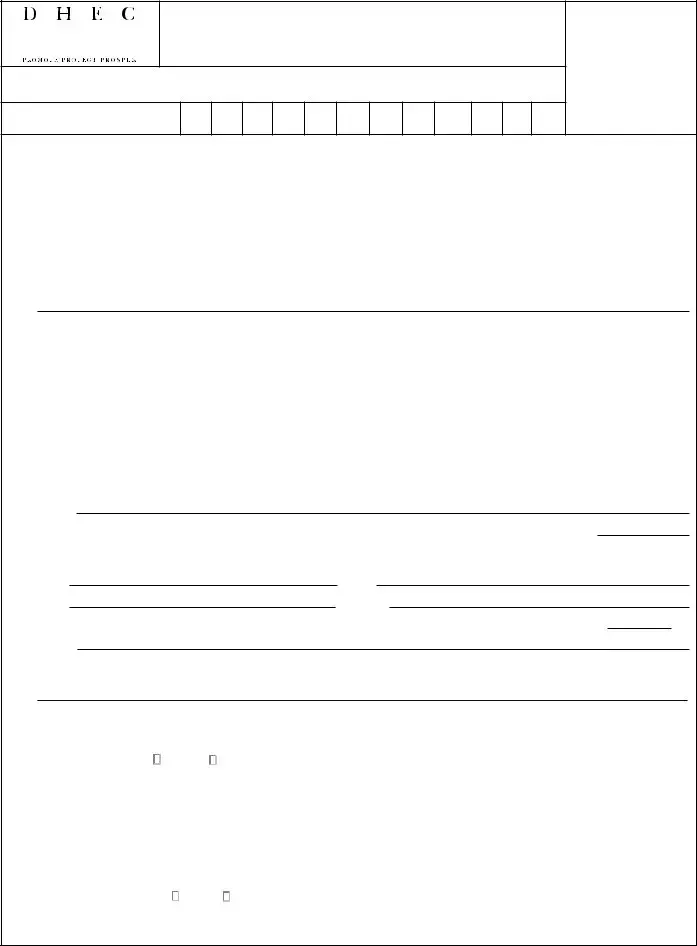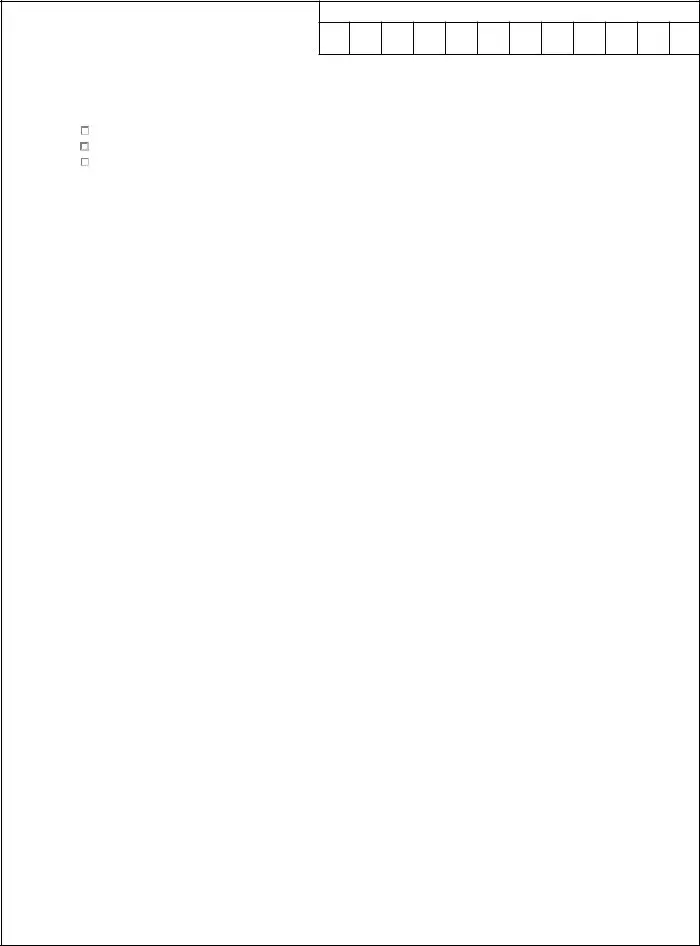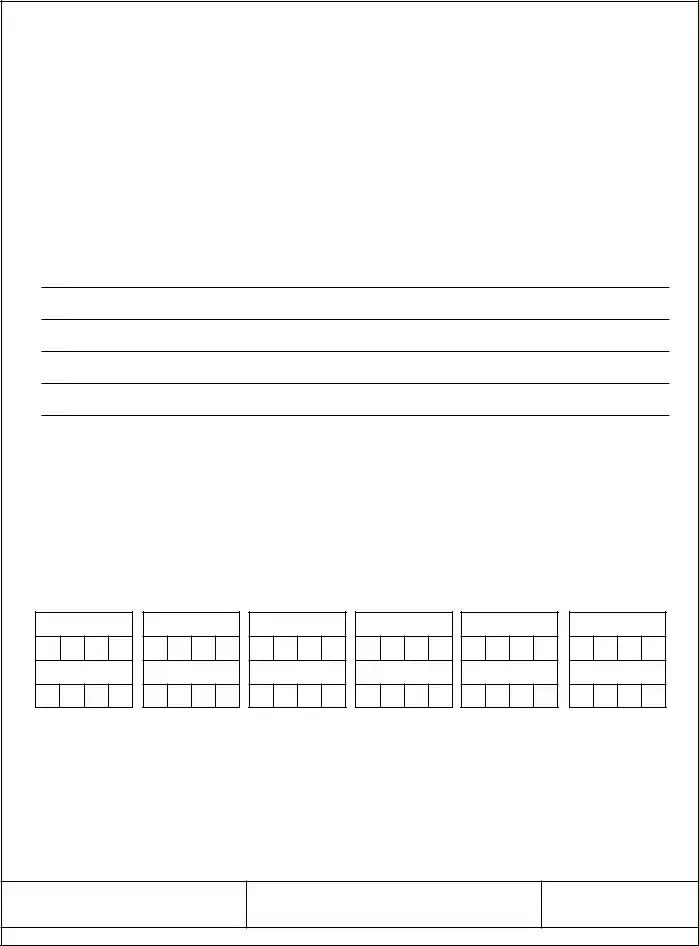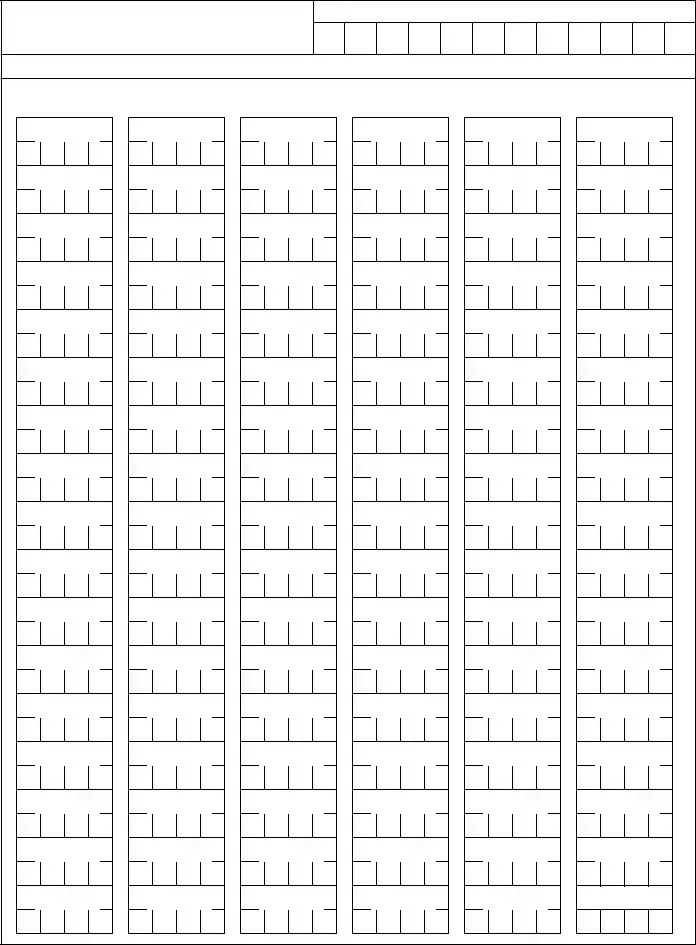One document similar to the DHEC 2701 form is the Resource Conservation and Recovery Act (RCRA) Subtitle C Site Identification Form, known as EPA Form 8700-12. This form is used across the United States for companies to notify the Environmental Protection Agency (EPA) of their hazardous waste activities. Both forms serve as a notification mechanism for regulatory bodies to be aware of the locations, types, and extents of hazardous waste activities, ensuring companies comply with environmental regulations. They collect critical information on the generator's waste activities, types of waste handled, and facility operations, which is essential for monitoring and enforcement purposes.
Another document similar to the DHEC 2701 form is the Uniform Hazardous Waste Manifest. This document accompanies shipments of hazardous waste from the moment they leave the producer until they reach the disposal facility. While the DHEC 2701 form is more about notification and reporting of hazardous waste activities at a stationary facility, the Uniform Hazardous Waste Manifest focuses on the transportation aspect. However, both documents play crucial roles in tracking and ensuring the safe and legal handling of hazardous materials, thereby protecting public health and the environment.
The Notification of Regulated Waste Activity form is also akin to the DHEC 2701 form. This form is utilized by businesses to inform state environmental agencies about their generation, storage, or disposal of hazardous waste. Similar to the DHEC 2701, this notification lays the groundwork for regulatory oversight, identifying entities involved in hazardous waste operations. These notifications are critical for state agencies to maintain updated records of hazardous waste activities within their jurisdictions, facilitating targeted inspections and compliance assessments.
The Biennial Hazardous Waste Report is another document that shares similarities with the DHEC 2701 form. While the DHEC 2701 form may serve as an initial notification or update of hazardous waste activities, the Biennial Report provides a more detailed account of the quantities and types of hazardous waste generated, as well as how and where this waste was treated, stored, or disposed of during the reporting year. Both documents provide regulatory agencies with vital data to assess compliance with hazardous waste regulations and to monitor trends in waste generation and management.
A Used Oil Generator Requirements form, specific to certain jurisdictions, also resembles the DHEC 2701 form in its focus on a specialized subset of hazardous waste—used oil. Similar to sections of the DHEC 2701 that deal with used oil activities, this form requires generators to detail their used oil storage, processing, and disposal practices. The objective is to ensure that these activities do not pose a risk to the environment or public health, affirming the commitment of businesses to proper waste management principles.
The Hazardous Waste Annual Fee Report is another document that shares purposes with the DHEC 2701 form. This report typically requires hazardous waste generators, treatment facilities, and disposal sites to provide information on the volumes of waste handled, as well as to remit annual fees based on their waste activities. Like the DHEC 2701 form, the annual fee report helps fund the oversight and enforcement activities of environmental agencies, ensuring facilities operate in compliance with hazardous waste regulations.
Lastly, the Chemical Inventory Reporting Form, often required under community right-to-know laws and regulations, has parallels with the DHEC 2701 form. This form usually pertains to the reporting of hazardous chemicals stored or used at a facility, providing emergency responders and local communities with information about potential chemical hazards. Although its focus is broader than just waste management, this form, like the DHEC 2701, plays a crucial role in environmental protection and community safety by offering transparency regarding hazardous substances at local businesses.











